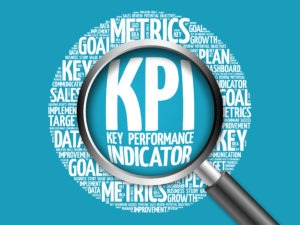
We have all heard the saying – “if it is not measurable it is not manageable.” Why then do we spend so much of our time managing the softer side of our employees rather than the results they actually achieve throughout the year? In some businesses it’s all about the statistics of achievement. In the sport world for example, each member of the team is evaluated on each aspect of their game and ranked against others in the same field.
In the business world some would say that’s just not possible. I say that’s due to the fact that not everyone on the team understands how they contribute to the overall success of the organization. Okay, in the sports world it’s easy, right? Everyone knows what the vision of the organization is – win the championship of course. There are clear parallels in business but they might not be as easy to define.
Vision
Most businesses have a vision for the organization. The question is – can it be as clearly defined and understood as winning the championship? The easy part of the sport world is that the path to the championship has been well defined. Rules have been set up that allow the manager or owner of the team to build a clearly understood strategy that can then be passed on to the coaches and players. In your business you can do the same thing!
The first step is to determine your vision for the organization. Keep it simple! Keep it measurable! If it’s not measurable it cannot be managed – Right? If it’s too complex no one will understand how to break the vision down into departmental and then individual goals.
Vision Statement
In the next Timeframe the company will Attainable Goal by Differentiator!
Most sports teams set out to win the championship but not all of them have the tools and resources to win it this year. So their timeframe might be to win the championship within the next three years by rebuilding the existing team. The same goes for your organization. You might not have the tools on board today to attain the ultimate goal but everyone should understand that’s where you are headed.
SMART Goals
Thankfully the hard part is done right? Wrong! Countless businesses I work with have the vision of where they are headed well in hand and simply cannot understand why they haven’t gotten there already. The long term goal (The Vision) needs to be broken down into yearly, quarterly and even daily goals for each member of the team. This is a very difficult task and can only be accomplished through strong communication and teamwork within the leadership of the company. Obviously, the real long term goal of a sports organization is to build the value of that organization by driving up revenue attained from broadcasting rights and game attendance. Can you imagine if that is what was communicated to the offensive line on a football team? They would have no way of relating their performance to that high level goal of the organization. So winning a championship becomes the goal. Every athlete can relate to this goal and understands what it means to their financial future.
But winning the championship is still too broad a goal to drive performance on the team. So that goal is broken down further in to win this week’s game and then again into scoring the touchdown. But it doesn’t stop there! It’s about first downs – achieving them for the offense and preventing them for the defense. “If you control the line of scrimmage you win the game.”
So what are the SMART goals for you team? How can you break them down into bit size measurable indicators that can be monitored and improved upon each day?
I like to use the example of the airline that wanted to improve on time performance (Goal) in order to raise the overall rating of the airline. Anyone who travels can understand how this impacts their lives and therefore they pay attention to this rating when selecting their airline of choice. In turn this will drive revenue for the airline. So increasing revenue is the high level goal but the employees cannot directly relate to this goal. Not everyone in your business understands business and therefore you need to make the goals at the employee level relatable to the worker.
But on time performance was still too broad a goal. This goal was in turn broken down further in to Key Performance Indicators (KPI’s) for the baggage handlers, maintenance workers, gate attendance, pilots and flight attendants.
Baggage Handlers: Have all bags loaded 20 minutes prior to the flight’s departure
Maintenance Workers: Have all flight checks completed 40 minutes prior to flight departure
Gate Attendants: Have all passengers loaded 10 minutes prior to departure
Pilots and Flight Attendants: Arrive at the plane 30 minutes prior to departure
Of course there is more to it than this but for the purposes of our discussion today you can see my point. These are KPI’s related to the goal that can be reported and monitored to better understand where the weak points in the operation are. Once identified you can put improvement plans in place that might include training or improved technology to report problems ahead of time.
So start today.
- Make sure your vision is clear and relatable
- Ensure the strategy to attain the vision is well thought out and documented
- Breakdown the goals into (KPI’s) that can be measured at the department and even employee level.
When differences are discovered through the reporting process, don’t shoot the messenger. Sometimes the process is to blame for good people achieving poor results. Ask them for their help in fixing the problem. If you hired the right people, and they understand what they need to do to achieve the goal you will be surprised at what can be resolved if you are willing to listen with an open mind.
